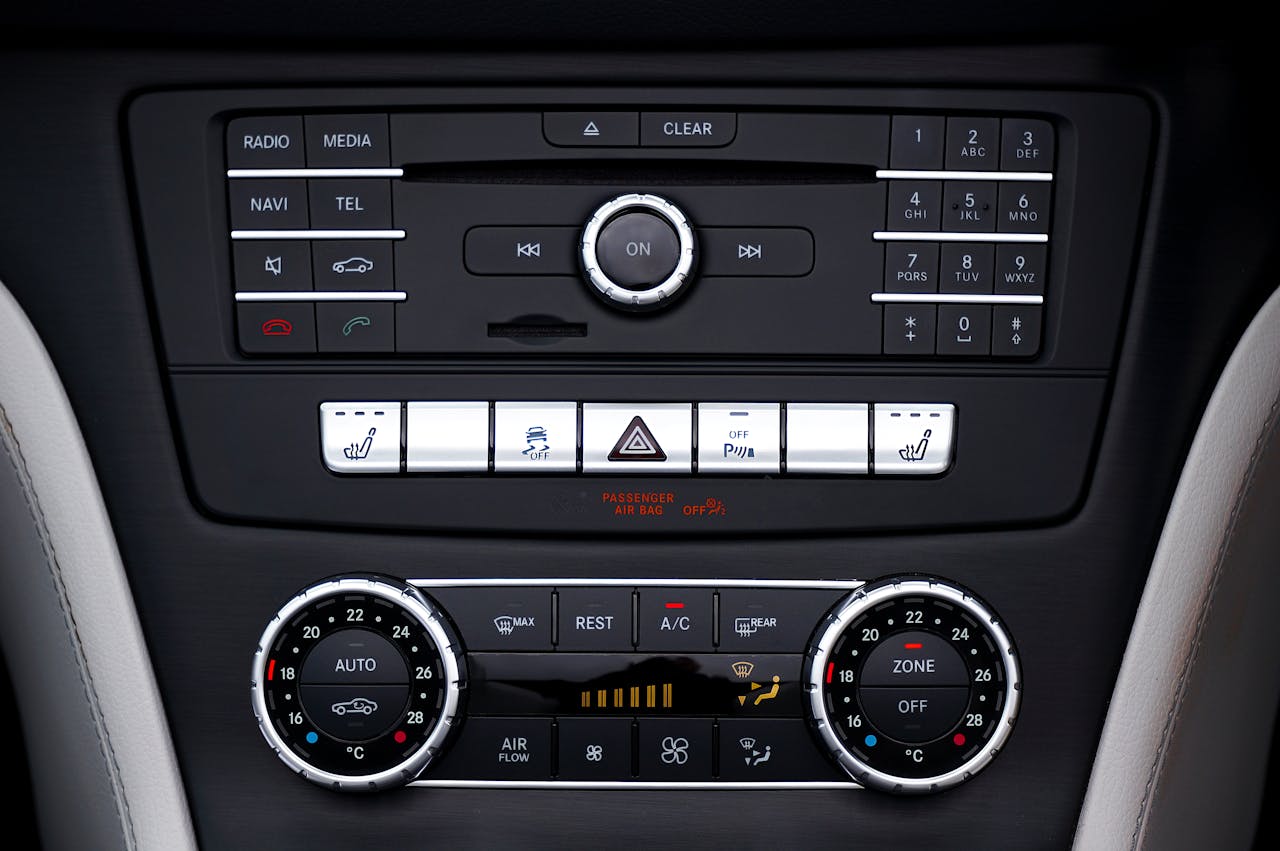Picture this: It’s a sweltering summer day, and you’re cruising down the highway with the windows down, hoping to catch a breeze to combat the heat. Suddenly, you realize that your car’s air conditioning system isn’t cooling as it should. The once-refreshing blast of cold air has been reduced to a feeble puff of lukewarm wind. What could be the culprit? Chances are, your car’s refrigerant levels might be running low, diminishing the effectiveness of your AC system. But fear not! With a bit of know-how and the right tools, you can easily recharge your car’s air conditioning system and restore it to its former glory.
Understanding the Importance of Refrigerant Recharge
Why Does Refrigerant Need Recharging?
Refrigerant is the lifeblood of your car’s air conditioning system. It’s responsible for absorbing heat from the cabin and dissipating it outside, leaving you with a cool and comfortable interior. However, over time, refrigerant levels can deplete due to various factors such as leaks, evaporation, or normal wear and tear. When refrigerant levels drop, the AC system becomes less efficient at cooling the air, resulting in decreased performance and comfort for the occupants.
Signs of Low Refrigerant Levels
How do you know if your car’s AC system is running low on refrigerant? There are several telltale signs to watch out for:
- Diminished Cooling Performance: If you notice that the air coming out of your vents isn’t as cold as it used to be, it could indicate low refrigerant levels.
- Warm Air: Instead of a refreshing blast of cold air, you might feel warm or lukewarm air coming from the vents when the AC is turned on.
- Unusual Noises: A hissing or bubbling sound coming from the AC system could indicate a refrigerant leak, leading to low levels.
Preparing for the Recharge Process
Before diving into the refrigerant recharge process, it’s essential to gather the necessary supplies and take some safety precautions:
Gathering Necessary Supplies
To recharge your car’s air conditioning system, you’ll need the following supplies:
- Refrigerant: Purchase the appropriate type and quantity of refrigerant recommended for your vehicle.
- Safety Gloves and Goggles: Protect your hands and eyes from potential contact with refrigerant.
- Pressure Gauge: Use a pressure gauge to monitor the pressure levels during the recharge process.
- UV Leak Detection Kit (Optional): If you suspect a refrigerant leak, a UV leak detection kit can help pinpoint the source.
Safety Precautions
Working with refrigerant can be hazardous, so it’s essential to take the following safety precautions:
- Work in a well-ventilated area to avoid inhaling harmful fumes.
- Wear safety gloves and goggles to protect your skin and eyes from contact with refrigerant.
- Avoid smoking or open flames near the recharge area, as refrigerant is flammable.
- Follow manufacturer guidelines and local regulations for handling and disposal of refrigerant.
Locating and Assessing the Low-Pressure Service Port
Before adding refrigerant to your car’s AC system, you’ll need to locate and assess the low-pressure service port:
Understanding AC System Components
To locate the low-pressure service port, you’ll need to familiarize yourself with the various components of the AC system, including the compressor, condenser, evaporator, and refrigerant lines.
Identifying the Low-Pressure Service Port
The low-pressure service port is typically located on the larger of the two refrigerant lines coming from the compressor. It’s usually marked with an “L” or “Low” on the cap or port itself. Refer to your vehicle’s owner’s manual for specific instructions on locating the port.
Connecting the Refrigerant Canister

Once you’ve located the low-pressure service port, you can begin the process of adding refrigerant to your car’s AC system:
Attaching the Hose to the Low-Pressure Service Port
- Remove the cap from the low-pressure service port and set it aside.
- Attach the hose from the refrigerant canister to the low-pressure service port, ensuring a secure connection.
Ensuring Secure Connection
It’s essential to ensure that the hose is securely attached to the low-pressure service port to prevent leaks during the recharge process. Check for any signs of damage or wear on the hose and replace it if necessary.
Initiating the Recharge Process
With the hose securely attached to the low-pressure service port, you can now initiate the recharge process:
Starting the Engine and Turning on the AC
Start the engine and allow it to idle. Turn on the air conditioning system to the maximum cooling setting, ensuring that the fan is set to the highest speed.
Adjusting the AC Controls
With the AC system running, adjust the controls to ensure that the air recirculation mode is activated and that the temperature is set to the coldest setting. This will maximize the effectiveness of the recharge process.
Adding Refrigerant
Now comes the critical step of adding refrigerant to your car’s AC system:
Following Manufacturer Guidelines for Refrigerant Type and Quantity
Refer to your vehicle’s owner’s manual or consult with a professional technician to determine the appropriate type and quantity of refrigerant needed for your specific make and model.
Monitoring Pressure Gauge Readings
As you add refrigerant to the system, monitor the pressure gauge readings to ensure that the pressure levels remain within the recommended range. Overcharging the system with refrigerant can lead to damage, so it’s essential to proceed with caution.
Checking for Leaks and System Integrity
Once you’ve added the necessary amount of refrigerant to the system, it’s time to check for leaks and ensure the integrity of the AC system:
Conducting Visual Inspection
Inspect the AC system components, including the compressor, condenser, evaporator, and refrigerant lines, for any signs of leaks or damage. Look for oily residue or debris, which may indicate a refrigerant leak.
Performing Leak Test with UV Dye
If you suspect a refrigerant leak but can’t identify the source visually, you can perform a leak test using a UV leak detection kit. Inject UV dye into the AC system and use a UV light to locate any leaks.
Completing the Recharge Process
Once you’ve verified the integrity of the AC system and ensured that there are no leaks, you can complete the recharge process:
Shutting off the Engine and Disconnecting the Hose
Turn off the engine and disconnect the hose from the low-pressure service port. Replace the cap on the port to prevent dirt and debris from entering the system.
Verifying Cooling Performance
Restart the engine and turn on the AC to verify that the cooling performance has improved. You should notice a significant difference in the air temperature coming from the vents, indicating that the recharge process was successful.
Additional Tips for Optimal AC Function
To maintain optimal performance and longevity of your car’s air conditioning system, consider the following tips:
Regular Maintenance Schedule
- Follow a regular maintenance schedule for your vehicle, including periodic inspections of the AC system by a qualified technician.
Keeping Cabin Air Filters Clean
- Replace cabin air filters regularly to ensure proper airflow and prevent contaminants from entering the AC system.
Conclusion
Recharging your car’s air conditioning system is a straightforward process that can significantly enhance your driving experience, especially during hot weather conditions. By following the steps outlined in this guide, you can safely and effectively restore cooling performance, ensuring comfort and convenience on the road.
FAQs
How often should I recharge my car’s air conditioning system?
It’s recommended to recharge your AC system every 1-2 years to maintain optimal performance.
Can I recharge the refrigerant myself, or should I consult a professional?
While recharging the refrigerant can be done at home, it’s essential to follow safety precautions and manufacturer guidelines. If unsure, consulting a professional technician is advisable.
What are the common signs of low refrigerant levels in a car AC system?
Signs include diminished cooling performance, warm air blowing from vents, and unusual noises from the compressor.
Is it normal for refrigerant levels to deplete over time?
Yes, refrigerant can naturally escape from the AC system over the years due to tiny leaks or permeation through hoses and seals.
Can overcharging the AC system with refrigerant cause damage?
Yes, overcharging can lead to excessive pressure buildup, potentially causing damage to AC components. It’s crucial to follow manufacturer specifications for refrigerant quantity.
Last Updated on March 17, 2024 by admin

Mac is an Automotive enthusiast. He owns up to 15 vehicles. He deals with Auto problems and shows his skill to Car owners who are seeking any type of Car help.





